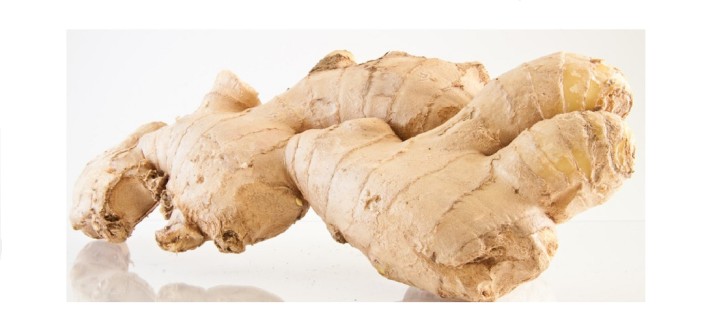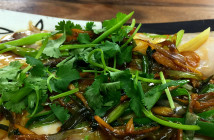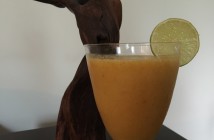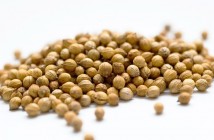In China, ginger is not just a spice used in many of the dishes, it is also the spice of life. As documented in Chinese herbology, ginger has been used for centuries to warm stomach and lung, restore devastated yang, and treat nausea and cold.
Aromatic, pungent and spicy, ginger adds special zest and flavor to various stir fries and fruit-and-vegetable dishes around the world. It is available fresh all year round in the produce sections of local markets. Ginger is the underground rhizome of its mother plant and has a firm, striated texture. Depending on the variety, its flesh can come in many colors, including white, yellow and red. It is covered with brownish skin that is either thin or thick, depending on whether the plant is harvested when it was young or mature. The mature ginger is widely available and has tough skin that requires peeling, while the younger one, available mostly only in Asian markets, is tender and does not need peeling.
Taste and Aroma
It has pungent and lemony fresh aroma and sweet, tangy, and spicy taste.
Pairing Spices
Allspice, cardamom, chili, cinnamon, cloves, coriander, cumin, fennel seed, lemongrass, paprika, star anise, turmeric
Complements
Cakes, pastries and biscuits, pumpkin scones, baked pumpkin, curries, Asian stir-fries, red meats, seafood
Culinary Uses
Ginger can be sliced, minced or julienned. When removing the skin from a fresh mature root, peel it with a paring knife. The taste this spice imparts to a dish depends on the time it is added during the cooking process. When added at the start, it will produce a subtler flavor. When added near the end, it will deliver a more pungent taste. Recipes that you can make with ginger include lemonade, side dishes, salad dressings, pastries and sautéed.
Buying and Storing
When buying ginger, choose the fresh one over the dried form because it is superior in flavor and contains higher levels of gingerol and active protease, which is an anti-inflammatory compound. Make sure it is firm, smooth and free of mold.
For storage, you can put it in the refrigerator for up to several weeks (up to several months if it is stored in the freezer) if it is not peeled. On the other hand, the dried and powder forms are best kept in a tightly sealed glass container in a dry, cool and dark place. Or, you can store them in the refrigerator to enjoy extended shelf life of about a year.
Health Benefits
This spice contains many nutrients and calories that are highly useful in achieving and maintaining optimum wellness. These include proteins, carbohydrates, vitamins and minerals, individual fatty acids and dietary fibers, which are known to deal with a wide range of health conditions, from minor diarrhea to the serious cancer.
Historically, ginger has been very effective in alleviating symptoms of certain ailments, particularly those related to the gastrointestinal system. In herbal medicine, it is regarded as an excellent substance that promotes the elimination of intestinal gas and relaxes the intestinal tract. Modern research reveals that this spice contains a variety of therapeutic function, such as being an antioxidant and inhibiting the formation of inflammatory compounds.
Aside from these properties, ginger also functions as a safe and effective relief of vomiting and nausea during pregnancy, anti-inflammatory agent, protection against certain cancers and immune system booster, and relieves arthritis, asthma.
Use in Supplements
Apart from being used in helping treat diseases in its original form, ginger can also be dried, powdered and processed to become an ingredient in supplements. It can also be turned into juice or oil. Working hand in hand with other nutrients, it can help deal with various illnesses, such as stomach problems, motion sickness, colic, diarrhea, nausea caused by cancer treatment and loss of appetite. It is believed to work in the brain and nervous system to perform its therapeutic functions.




